Abstract
An in vitro chemosensitivity test has been applied to malignant melanoma cells from 5 patients. The tumour cells were first grown as xenografts in immune-suppressed mice, so that the results of the in vitro test could be compared with precise measurements of the sensitivity of the melanoma cells when exposed to chemotherapeutic drugs in vivo in the mouse. The in vitro assay involved exposing the tumour cells to each of 8 drugs, after which cell survival was determined by colony assay in soft agar. Dose-response curves were obtained and the surviving fraction at drug levels estimated to be achieved in man was used as a measure of in vitro drug sensitivity. Significant differences among the 8 drugs were detected, and these accorded with clinical experience. The correlation of in vivo (in the mouse) and in vitro sensitivities to Melphalan and MeCCNU was also significant.
Full text
PDF
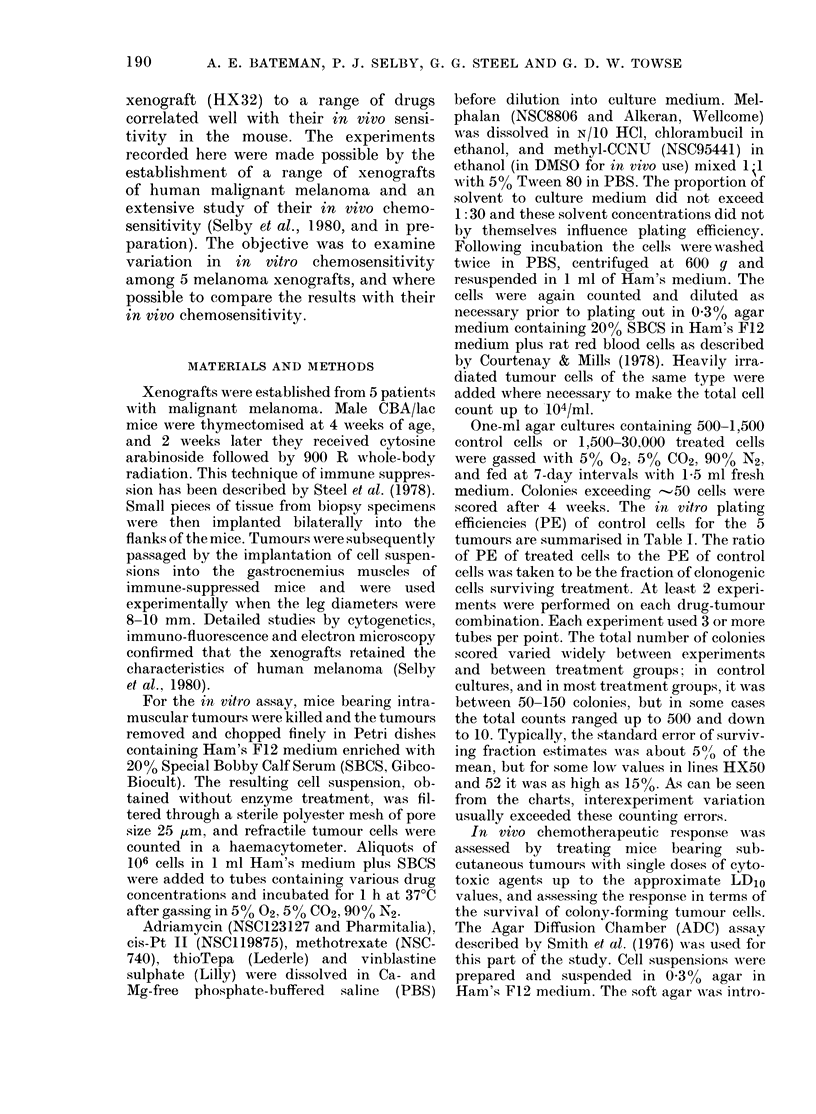

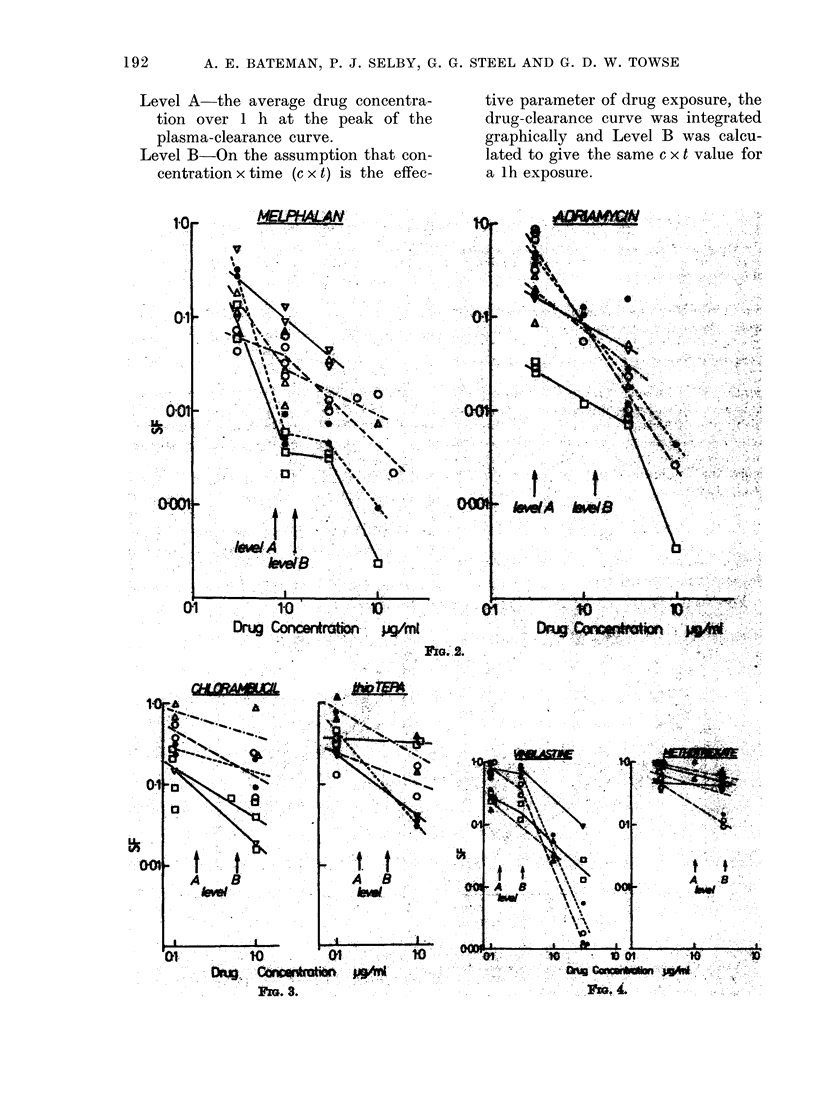

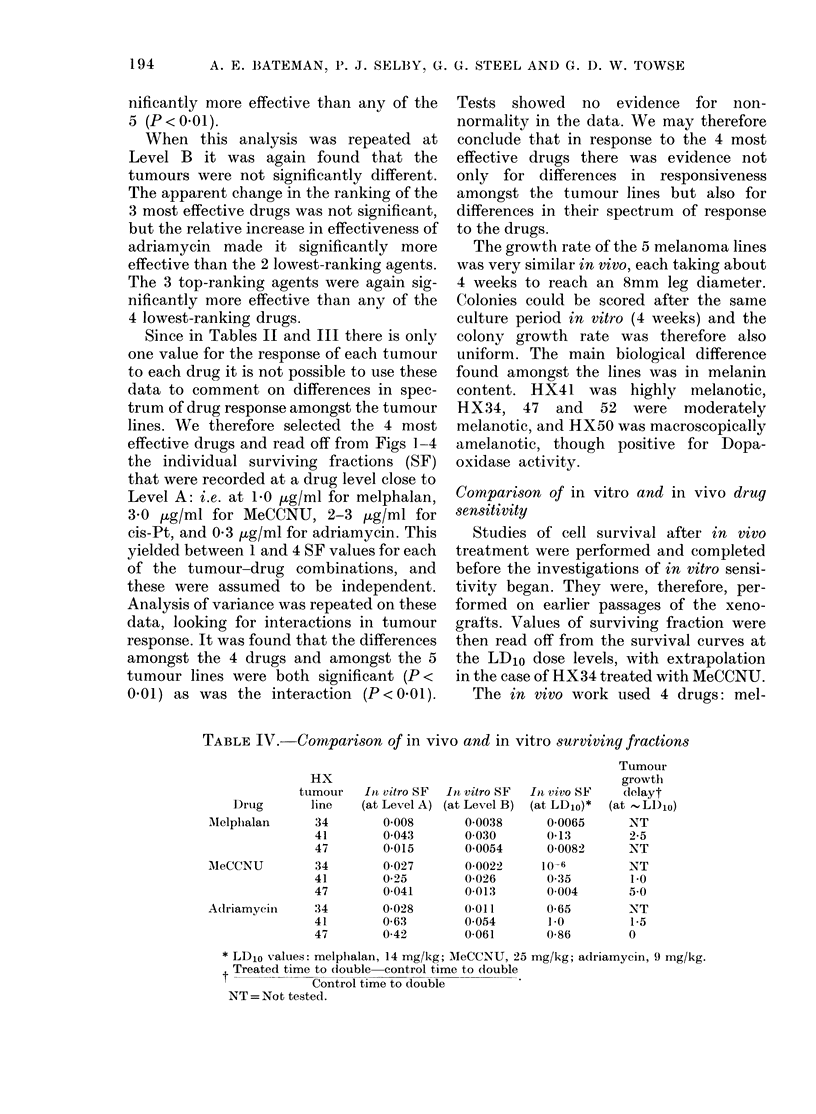
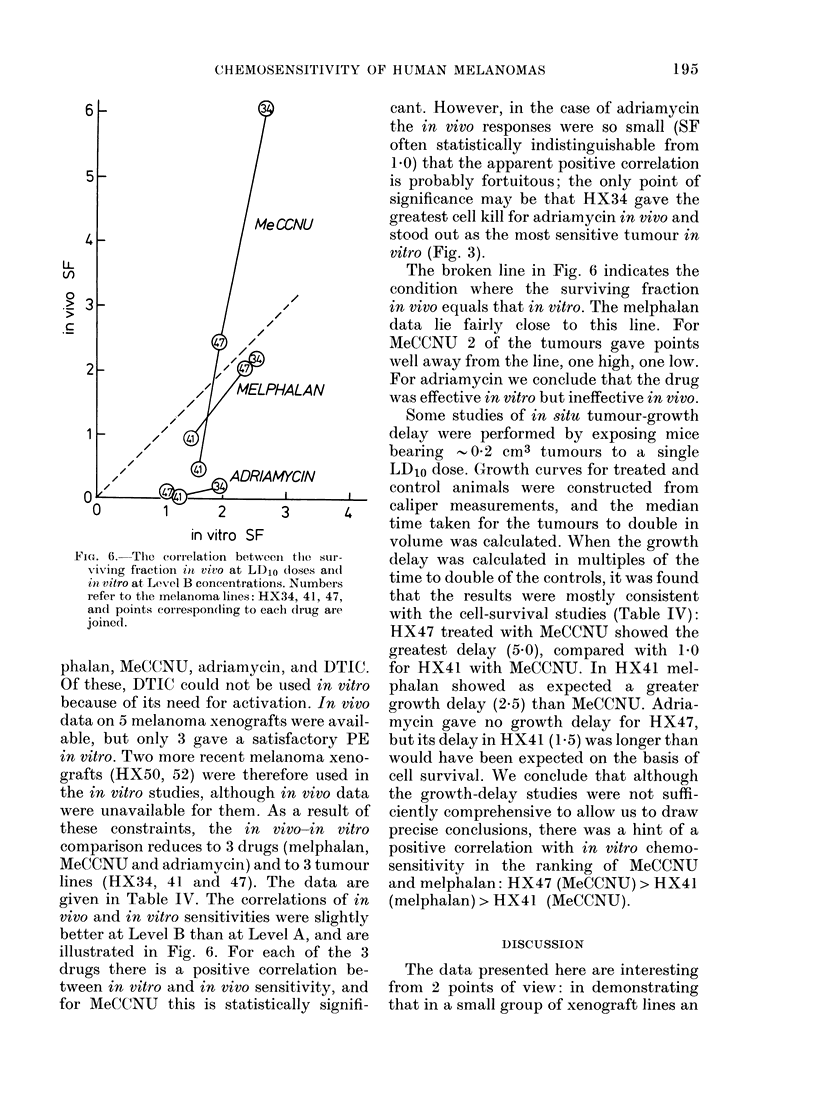
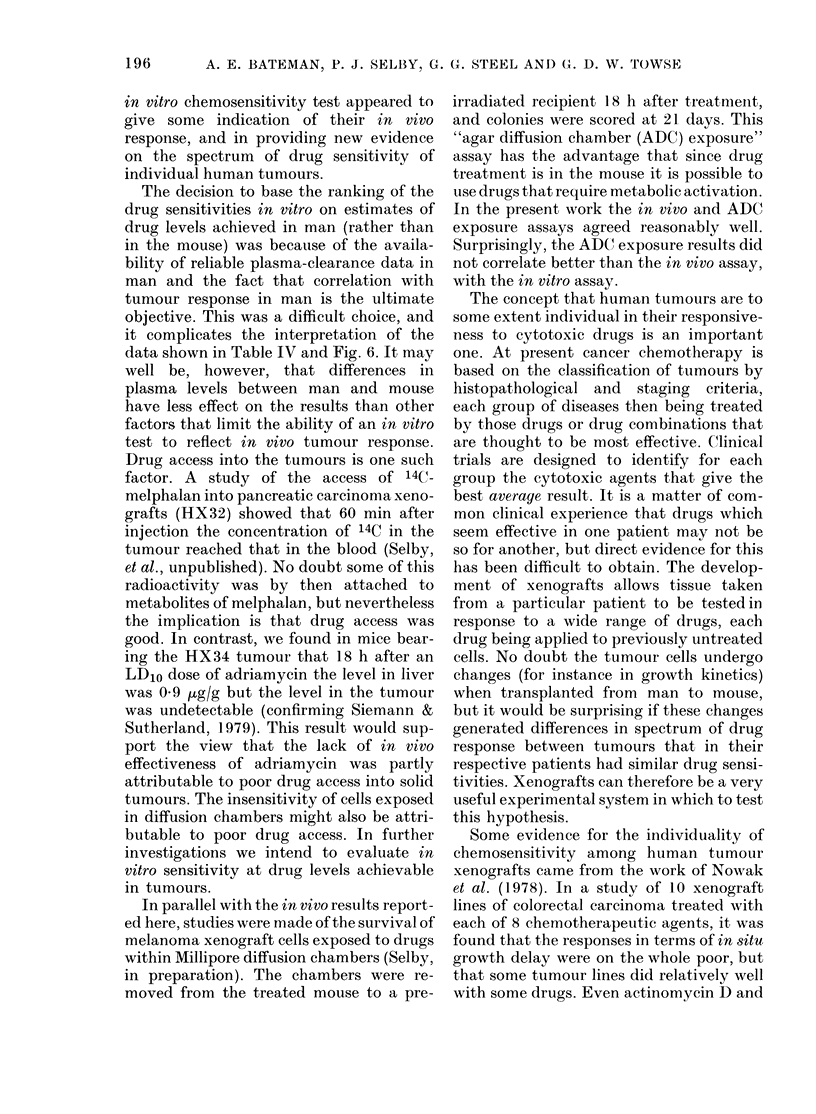
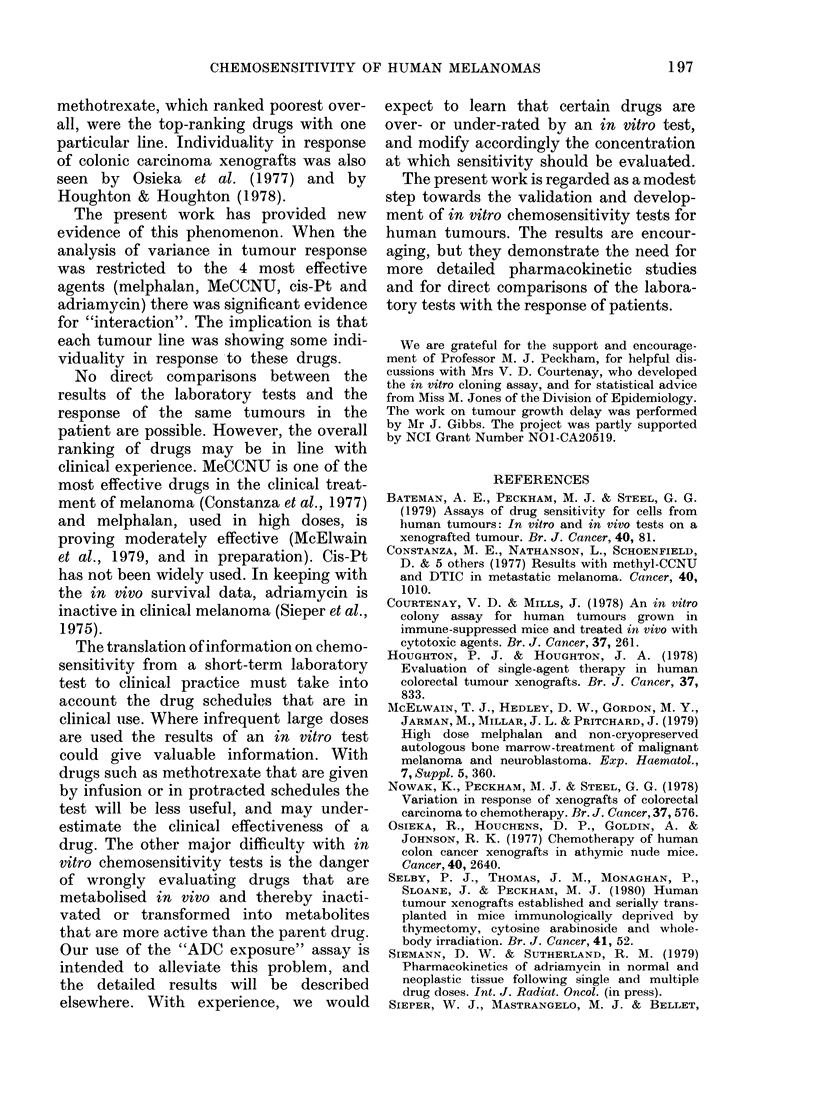

Selected References
These references are in PubMed. This may not be the complete list of references from this article.
- Bateman A. E., Peckham M. J., Steel G. G. Assays of drug sensitivity for cells from human tumours: in vitro and in vivo tests on a xenografted tumour. Br J Cancer. 1979 Jul;40(1):81–88. doi: 10.1038/bjc.1979.143. [DOI] [PMC free article] [PubMed] [Google Scholar]
- Courtenay V. D., Mills J. An in vitro colony assay for human tumours grown in immune-suppressed mice and treated in vivo with cytotoxic agents. Br J Cancer. 1978 Feb;37(2):261–268. doi: 10.1038/bjc.1978.35. [DOI] [PMC free article] [PubMed] [Google Scholar]
- Houghton P. J., Houghton J. A. Evaluation of single-agent therapy in human colorectal tumour xenografts. Br J Cancer. 1978 May;37(5):833–840. doi: 10.1038/bjc.1978.122. [DOI] [PMC free article] [PubMed] [Google Scholar]
- McElwain T. J., Hedley D. W., Gordon M. Y., Jarman M., Millar J. L., Pritchard J. High dose melphalan and non-cryopreserved autologous bone marrow treatment of malignant melanoma and neuroblastoma. Exp Hematol. 1979;7 (Suppl 5):360–371. [PubMed] [Google Scholar]
- Nowak K., Peckham M. J., Steel G. G. Variation in response of xenografts of colo-rectal carcinoma to chemotherapy. Br J Cancer. 1978 Apr;37(4):576–584. doi: 10.1038/bjc.1978.87. [DOI] [PMC free article] [PubMed] [Google Scholar]
- Osieka R., Houchens D. P., Goldin A., Johnson R. K. Chemotherapy of human colon cancer xenografts in athymic nude mice. Cancer. 1977 Nov;40(5 Suppl):2640–2650. doi: 10.1002/1097-0142(197711)40:5+<2640::aid-cncr2820400938>3.0.co;2-1. [DOI] [PubMed] [Google Scholar]
- Selby P. J., Thomas J. M., Monaghan P., Sloane J., Peckham M. J. Human tumour xenografts established and serially transplanted in mice immunologically deprived by thymectomy, cytosine arabinoside and whole-body irradiation. Br J Cancer. 1980 Jan;41(1):52–61. doi: 10.1038/bjc.1980.7. [DOI] [PMC free article] [PubMed] [Google Scholar]
- Smith I. E., Courtenay V. D., Gordon M. Y. A colony-forming assay for human tumour xenografts using agar in diffusion chambers. Br J Cancer. 1976 Nov;34(5):476–483. doi: 10.1038/bjc.1976.201. [DOI] [PMC free article] [PubMed] [Google Scholar]
- Sponzo R. W., DeVita V. T., Oliverio V. T. Physiologic disposition of 1-(2-chloroethyl)-3-cyclohexyl-1-nitrosourea (CCNU) and 1-(2-chloroethyl)-3-(4-methyl cyclohexyl)-1-nitrosourea (Me CCNU) in man. Cancer. 1973 May;31(5):1154–1156. doi: 10.1002/1097-0142(197305)31:5<1154::aid-cncr2820310517>3.0.co;2-b. [DOI] [PubMed] [Google Scholar]
- Steel G. G., Courtenay V. D., Rostom A. Y. Improved immune-suppression techniques for the exongrafting of human tumours. Br J Cancer. 1978 Feb;37(2):224–230. doi: 10.1038/bjc.1978.30. [DOI] [PMC free article] [PubMed] [Google Scholar]


